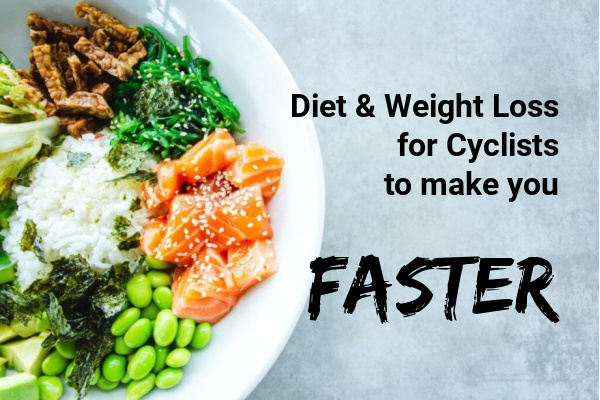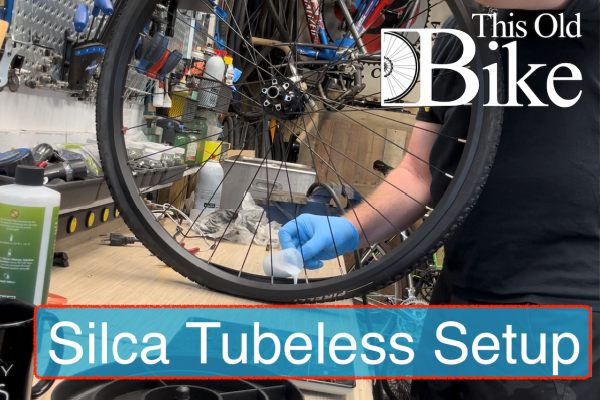
Diet And Weight Loss To Make You Faster
Nutrition and food choices are a key component of weight loss for all endurance athletes, including cyclists. When done correctly, weight loss can have a huge

Injuries are an undeniable fact for athletes, even cyclists. The repetitive pedaling motion predisposes us to the perils of overuse, and for many crashes are a traumatic reality of our beautiful but unforgiving sport. The weekend warrior in us often lives our athletic youth vicariously through our weathered and battered bodies, and something has to give.
Cycling-related injuries aren’t typical, but they can be common and not unusual. The collective moans and groans of the group’s creaky joints and tender muscles are constant talking points that grow louder each year. Also common and not unusual is the fear and apprehension we feel when preparing to get back to the very activity that caused us pain.
According to the authors of a 2017 study published in the journal Sports Health, there are close to 7-million athletic injuries in the US and up to 19-percent of injured athletes experience psychological distress. The reports of anxiety, depression, frustration, tension, and decreased self-esteem influence the return to sport and parallel levels of individuals receiving treatment for mental health issues following an accident.
Once the physical pain has subsided, athletes are left holding the memory and lack confidence in doing the thing that hurts. Our minds protect us from danger, and the endurance athlete’s mentality is to avoid reinjury and more time away from training.
When the question invariably arises among the cycling and athlete population, the advice is always the same.

The most significant fear for athletes with injuries is the unknown. It is new territory for them, and there is no reference for their body’s reaction. Athletes pride themselves on being in tune with their physical feelings but get out of synch when presented with a pinch, twinge, or throb.
The regimented endurance athlete thrives on structure, and the transition from injury to sport is no different. Be prepared with the knowledge of an effective post-injury return to cycling plan. Do the rehab and recovery work required to put yourself in the best pain-free position to succeed in resuming. Trust the process and resist the urge to skip steps, push it when you feel good, or test the limits.
The following post-injury return to cycling protocol is the evolution of evidence-based information and years of personal and clinical experience with roots in a plan devised by Brigham and Women’s Hospital.
The Preparation
Before we get started, there are a few things that we need to get out of the way first.
Once you’ve fulfilled the pre-requisites, it’s time to begin your post-injury return to cycling. The initial two weeks are crucial and will focus on a steady but conservative progression with actions when faced with tightness and pain symptoms.
Before you get going be sure to get in a sensible and thorough warm-up like the ones detailed in this The ZOM article entitled, “Warm-Up Essentials for Virtual Cycling Success.”

Follow each phase with a dynamic cool-down and jump-start the recovery process with the tips found in this The ZOM article entitled, “A Proper Cool-Down is Essential for the Virtual Cyclist.”
Perform the eight-phase plan every other day over the first two weeks.
The Training Zones based on the standard set by Joe Friel and adopted by TrainingPeaks can be found here. Since it is meant as a basic framework power and heart rate may be used interchangeably.
The important thing is to follow the progression and avoid advancing to the next phase unless you are pain-free.

Stiffness or tightness are expected and normal when returning to cycling following an injury. Don’t be discouraged. Here’s how you should handle it!
Pain is a more serious sign than stiffness and must be treated with concern. Have a healthy respect for the symptom but don’t be alarmed. Here’s what to do!
3. If pain is noted only after finishing the phase be sure to perform your recovery routine and repeat the same one next time after a rest day.
4. If the pain comes on at night or is noticed in the morning then proceed with your normal rest day routine and repeat the previous stage.
5. If you ever experienced sharp pain in the target area that is similar in nature but not intensity to what you felt when injured immediately stop, begin your recovery routine, and allow two or more days to rest. Resume with the previous phase paying careful attention to the actions above.
It’s vital to be mindful of the pain you are experiencing. If the symptoms can be described more as stiffness than pain, they don’t affect your ability to pedal, and it moves around or goes away as you warm-up, then you are okay.
However, if the pain is sharp and causes you to stop pedaling, wakes you up at night, worsens the more you ride and affects your pedaling ability, and causes swelling then it is not okay. Be careful and trust the process!
You’ve done the hard work and your preparation, diligence, and discipline have made you successful. The first two weeks are critical in setting the groundwork and a solid base to build off of. Continue to increase your volume and intensity by 10-percent a week until you are at pre-injury levels.
Monitor your symptoms and be willing to take a step back and add in some rest days if pain develops. When in doubt and the symptoms persist seek re-assessment by your health professional. The objective perspective of a certified cycling coach is always a good idea to help you to the next level.
Of course, the suggestions are a basic framework that will vary based on an athlete’s individual experience and is not a replacement for the authoritative personal advice from your healthcare or fitness professional.
The initial stages of any post-injury return to cycling protocol are vital. Be prepared by taking the time to rest and perform the rehabilitation necessary to meet the pre-requisites.
Do the work systematically and diligently progress through the phases with discipline. Avoid the urge to test yourself and trust the process.
Stiffness and pain are expected when returning to cycling after an injury and rehabilitation period. Don’t let them stand in your way of a successful return or cause re-injury. Be conscious of the signs and take appropriate action.
Be prepared, do the work, and trust the process!
By Chris Schwenker
In addition to being a contributor to Colorado Avid Cyclist, Chris is Semi-retired as owner and director of his private Orthopedic Physical Therapy practice after over 20 years, Chris is blessed with the freedom to pursue his passion for virtual cycling and writing. On a continual quest to give back to his bike for all the rewarding experiences and relationships it has provided him, he created a non-profit, and through its work and the pages of this site, Chris is committed to helping others with his bike. His gain cave is located on the North Fork of Long Island where he lives with his beautiful wife and is proud of his two college student children.

Nutrition and food choices are a key component of weight loss for all endurance athletes, including cyclists. When done correctly, weight loss can have a huge

Photos are rolling from Mt. Blue Sky/Bob Cook Memorial Hill Climb p/b Team Evergreen on that was held this past weekend. The day lived up

Pad Thai is a popular street food in Thailand, which is whipped up quickly and packed full of flavor. It’s one of our favorite post-ride

Tubless Tires: Myth or Magic? Justin Bolinger of I Know a Guy Bicycles “UNBOXES” the Truth about this setup (Should you go Tubeless?) Recent Posts

Last week, Douglas County hosted the Natural Grocers Criterium at their sheriff’s training facility, and the camera of Ryan Muncy/Ryan Muncy Photography was on the scene

When you are looking to refuel at lunchtime, go for carbs and quality protein – this pasta dish is ideal. Cycling takes energy, and energy come